Flight Planning
Center for Geospatial Analytics at North Carolina State University
Objectives
- Phases of flight planning
- Safety procedures and checklists
- Ground Control Points and its distirbution and accuracy
- Flight planning software
Pre-flight Considerations

Throughout the whole process, it is important to remember:
- What is the aim of the project?
- What is the required resolution?
- Flight regulations
- Weather
Project Definition

- Define spatial scale (spatial resolution and extent)
- Choosing UAS and sensor
- Assessing the cost, labor, and time consumption
- Collecting information about terrain
Project Definition

- Define the area (extent) and resolution based on:
- UAS and sensor capabilities
- Terrain constraints
- Project requirements
Project Definition

- Evaluate the legal constraints, obtain permission
- Defining the coordinate system:
- Dependent on the desired coordinate system of the final data
- Consistent with the coordinate system of GCP survey
Flight planning

- Mission area assessment
- Planning geometric parameters
- Choosing flight planning and flight logging platform
- Preliminary weather assessment (climate, season, forecasts)
- Creating a flight plan (software specific)
Placing Ground Control Points (GCPs)
- A minimum number of 5 GCPs is recommended.
- 5 to 10 GCPs are usually enough, even for large projects.
- In cases that the topography of the area is complex, use more GCPs
- The GCPs should be distributed evenly in the area
- Do not place the GCPs exactly at the edges of the area
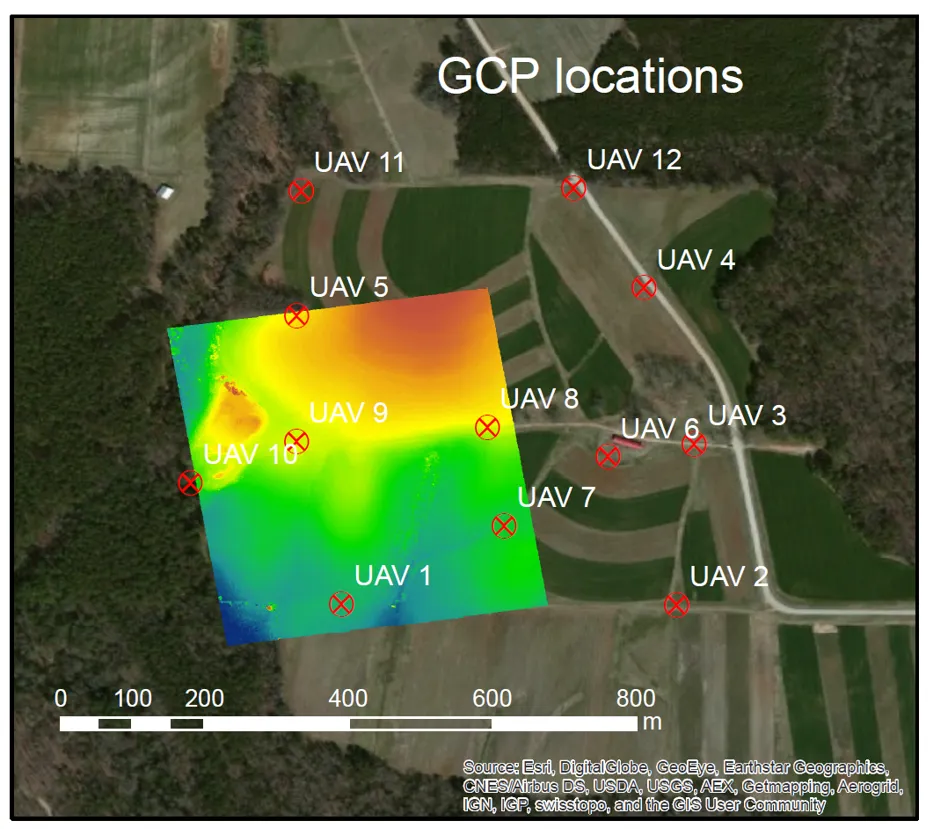
Placing Ground Control Points (GCPs)
Before measuring the GCPs coordinates, the following items must be defined:
- GCP coordinate system
- GCP accuracy
- Topographic equipment (total station or hand held GPS?)
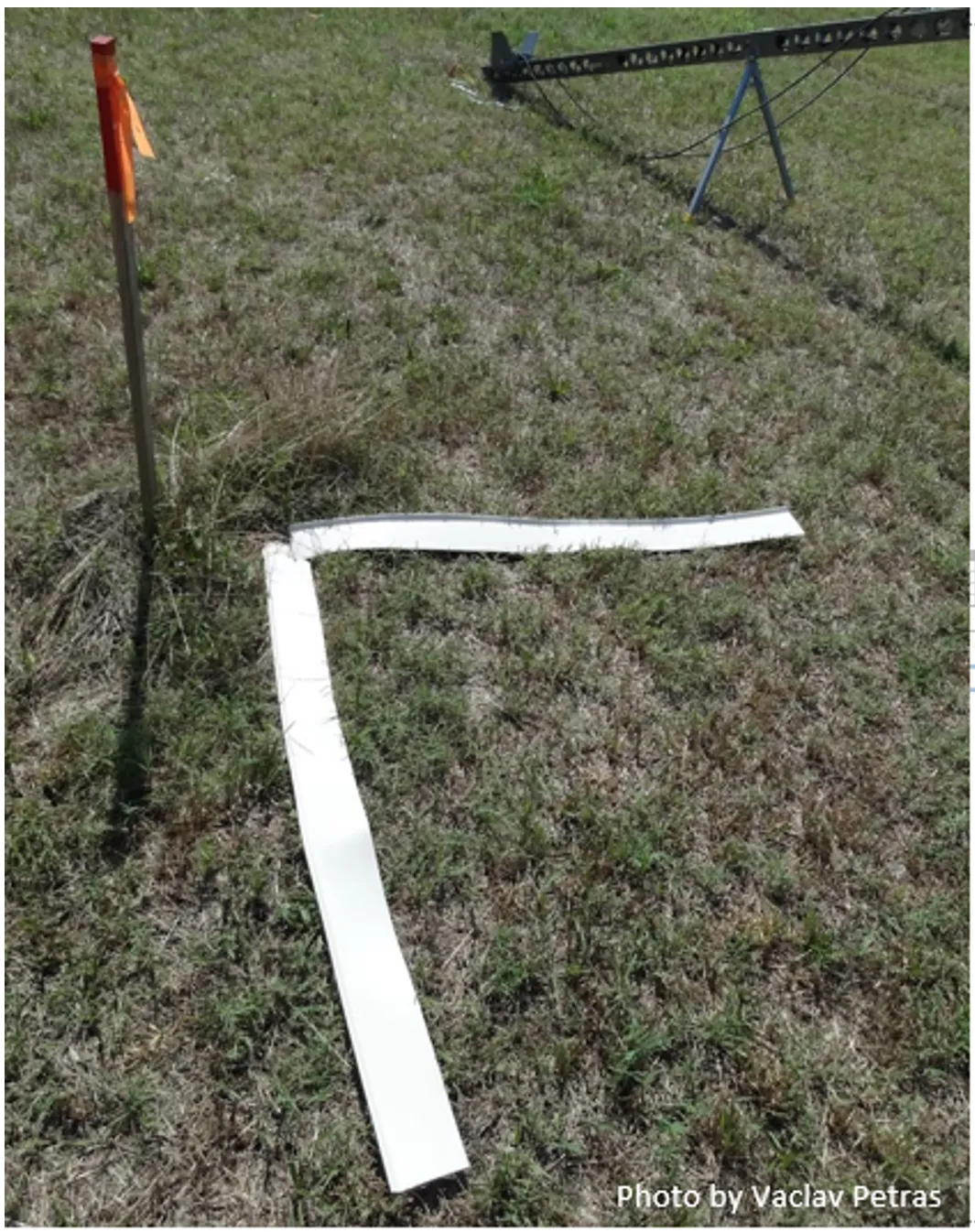
GCPs Accuracy
Factors for defining GCP accuracy:
- Accuracy needed for the final results
- Ground Sampling Distance* of the images:
- GCP target size: 5-10 x
- GCP accuracy: at least 0.1 GSD
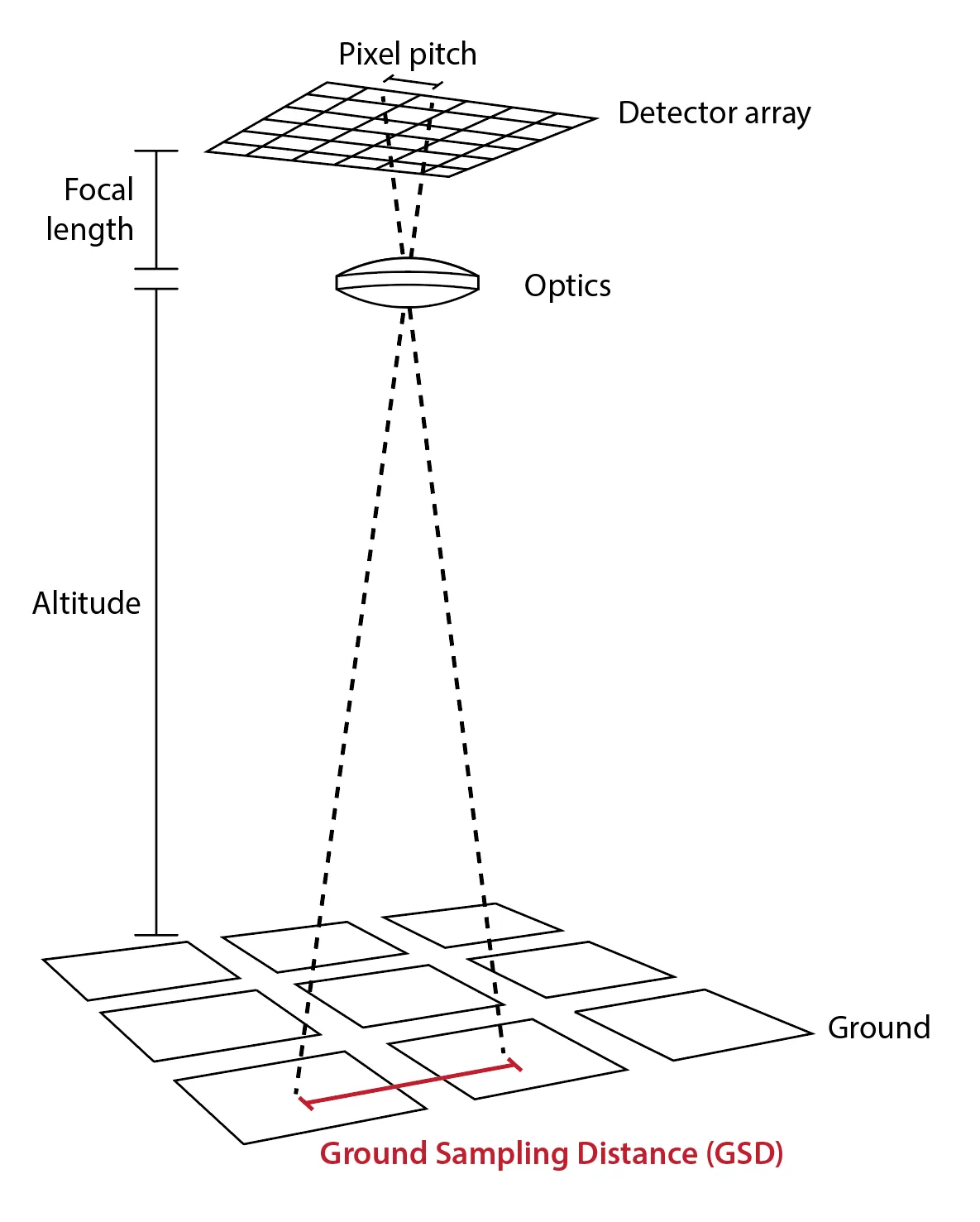
Distance between two consecutive pixel centers measured on the ground
Ground Sampling Distance
Distance between two consecutive pixel centers measured on the ground:
The formula to calculate GSD is:
\[ \text{GSD} = \frac{\text{A} \times \text{S}}{\text{F} \times \text{D}} \]
Where:
- A: Flight Altitude (m) (AGL - Above Ground Level)
- S: Sensor(hight, width) (mm)
- F: Focal Length (mm)
- D: Image Dimensions (height, width) (pixels)
Bigger GSD = lower spatial resolution
Smaller GSD = higher spatial resolution

Site evaluation and checklists

- Terrain check – high obstacles in the take-off, mission, landing, and alternative landing locations
- Ask the locals about possible air traffic or ground activities
- Weather check
- Temperature affects battery life
- Most of the UAS can’t operate in rain
- Use checklists, don’t rely on your memory!
- Sample checklists: paper (for Phantom) and RMUS app
Site evaluation and checklists
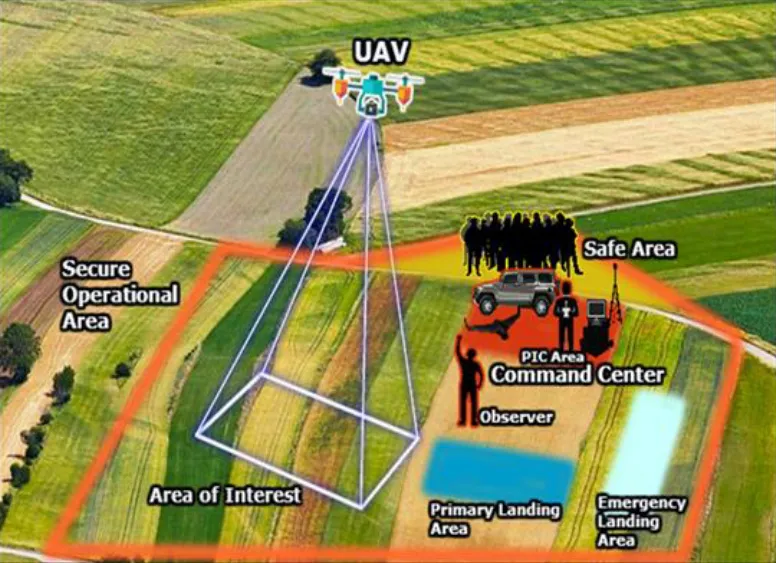
Site evaluation and checklists
Preflight inspection is required under Part 107.49;
Remote Pilot in Command (RPIC) is required to develop a preflight inspection checklist if the manufacturer has not developed one.
- The checklist is usually integrated into the UAS flight software or can be obtained from the UAS vendor
- In case that is not available, a standard Flight Checklist should be made and followed by the flight crew
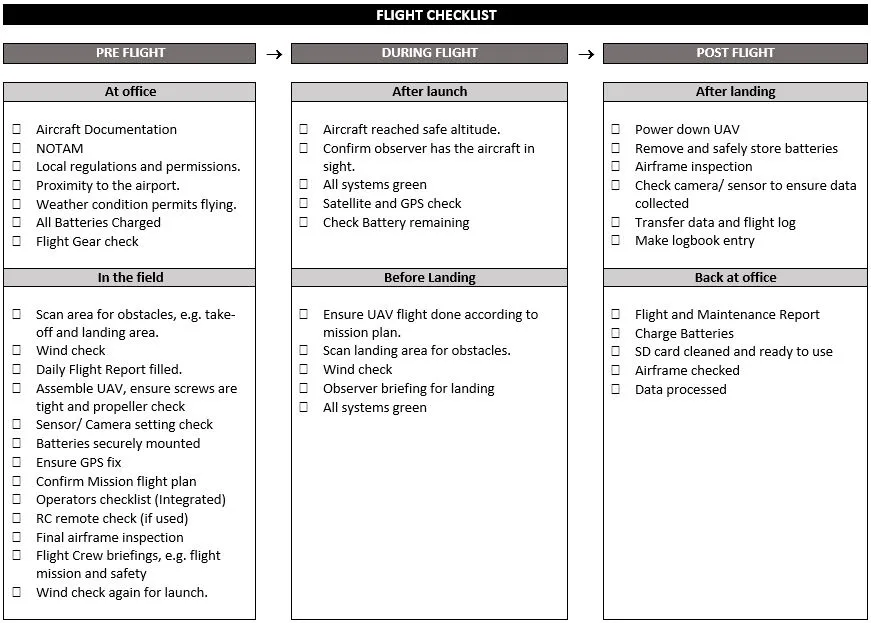
Note: As of Dec. 1, 2024, North Carolina no longer require commercial and government drone operators to obtain an N.C. permit
Flight control

- The UAS RPIC should launch, operate, and recover from preset locations so that the aircraft will fly according to the mission plan.
- Visual Line of Sight (VLOS) - the flight crew should have a clear view of the aircraft at all times, called .
- Observation locations should be selected for the maximum line of sight throughout the planned flight operations area (Part 107.31).
Flight control

- RP (Remote Pilot)
- PMC (Person Manipulating the Flight Controls), - - VO (Visual Observer)
- (if used): must be able to maintain effective communication with each other at all times (Part 107.33).
- Upon any failure during the flight or any loss of visual contact with the UAS, the RPIC should command the aircraft back to the recovery location or utilize the built-in fail-safe features to recover the aircraft.
Lake Wheeler - Imagery
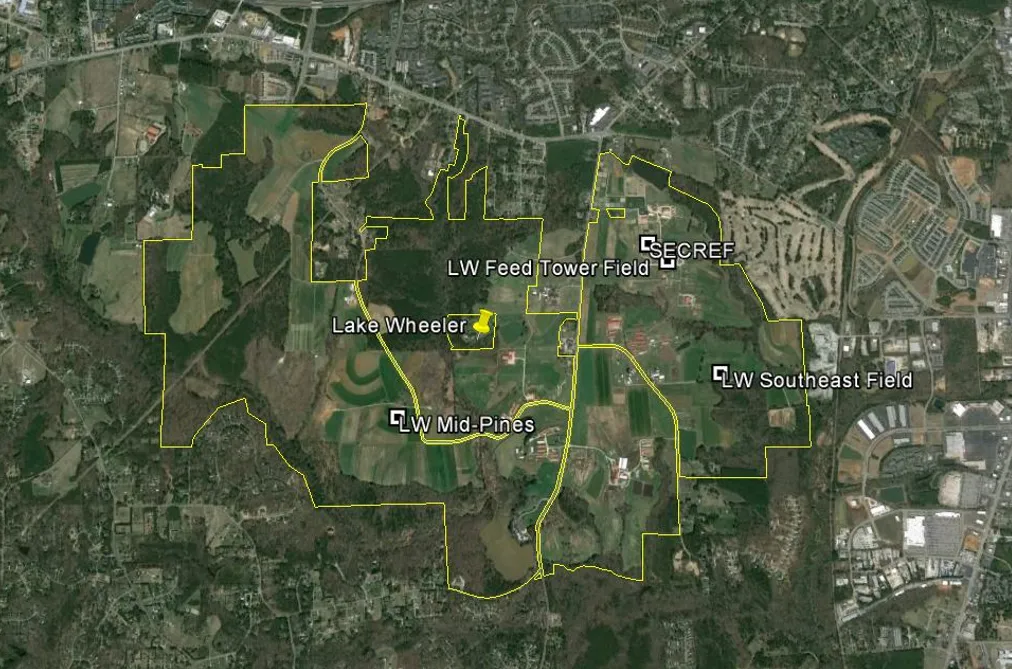
Lake Wheeler test site
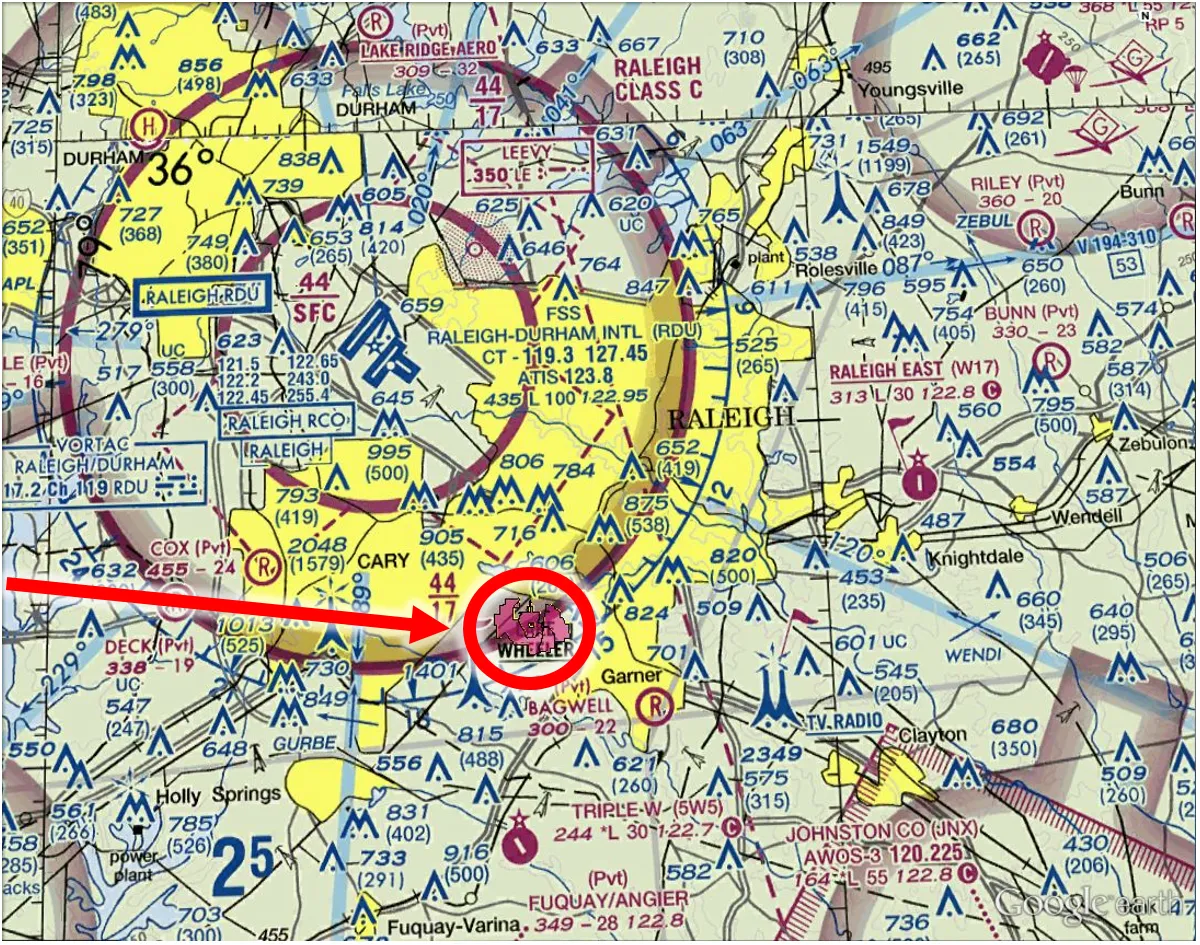
Flight planning software
- Multiple available platforms
- Some are dedicated for specific UAS and sold with the system by the manufacturer
Commerical
Open Source
How to plan a mapping flight?
UAS Photogrammetric process

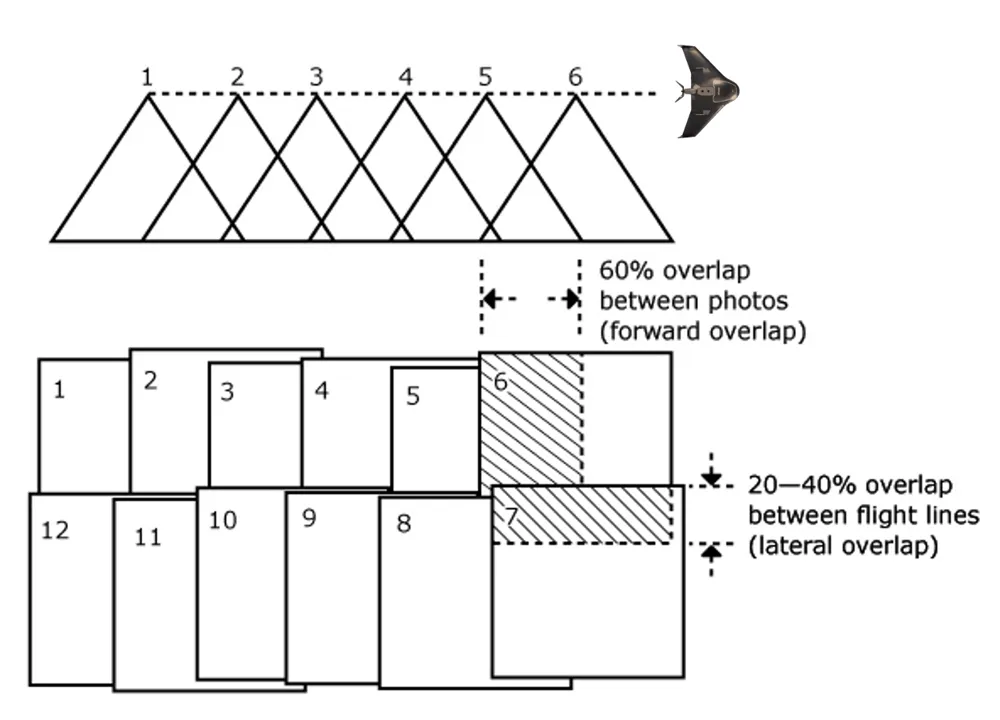
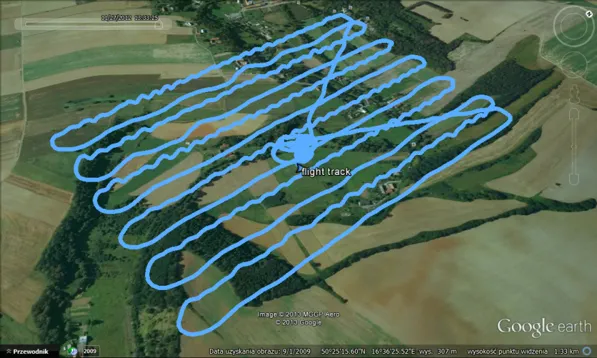
Location
- Fly larger extent than you need.
- Think about the area you need for analysis
Camera Specs
General camera setting are usally fine.
Optional Settings
- Mechanical Shutter: On
- Focus: inf
- Shutter Priority: 1/800
- Aspect Ratio: 3/2
Camera Angle
Nadir (Straight down)
- Most mapping
Oblique (Pitched)
- 70-80 degrees
- Improved 3D
- Buildings
- Rough Terrain
Altitude
Impacts the flight path
AGL = Above Ground Level
Altitude (AGL)
- 70m - 120m
Terrain Aware Fligh Path
Altitude 70m 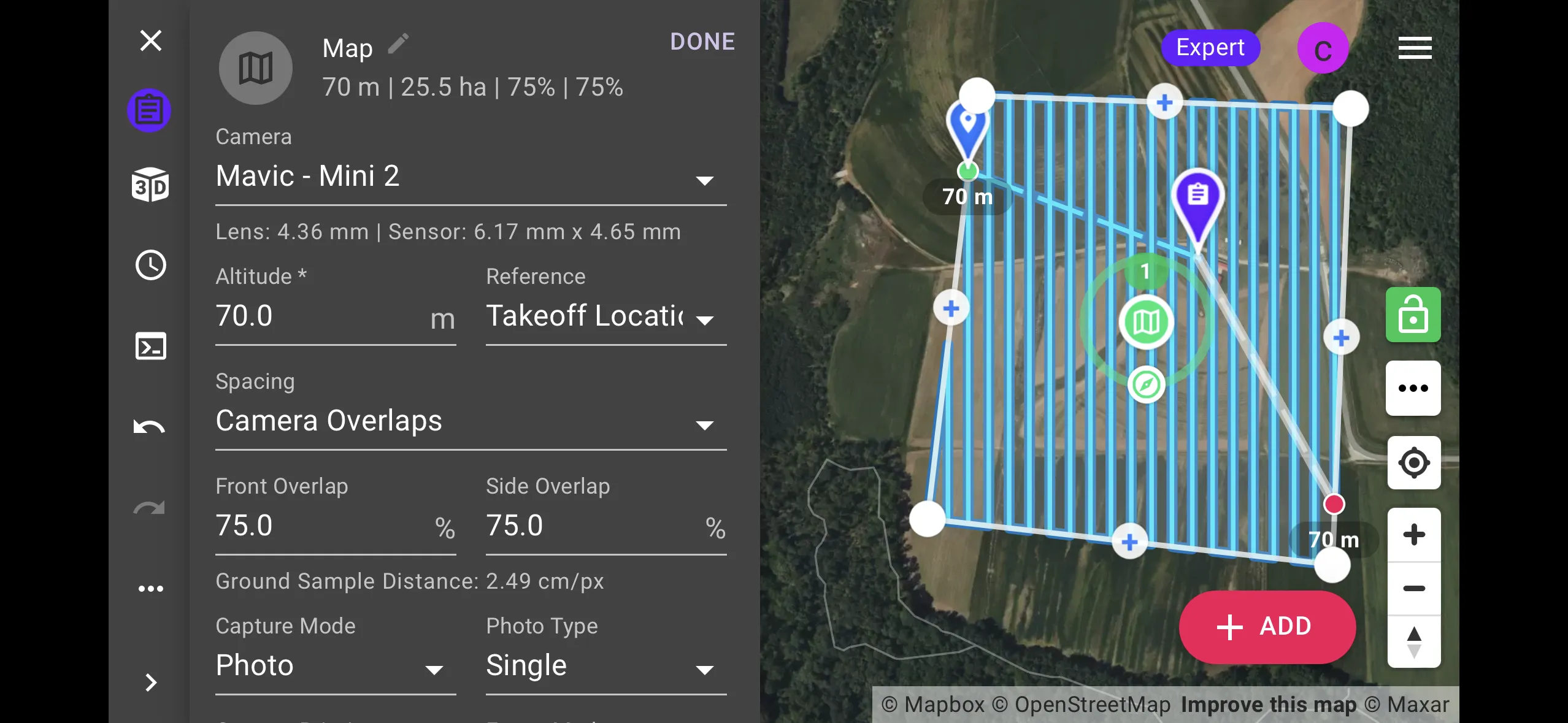 Altitude 120m
Altitude 120m 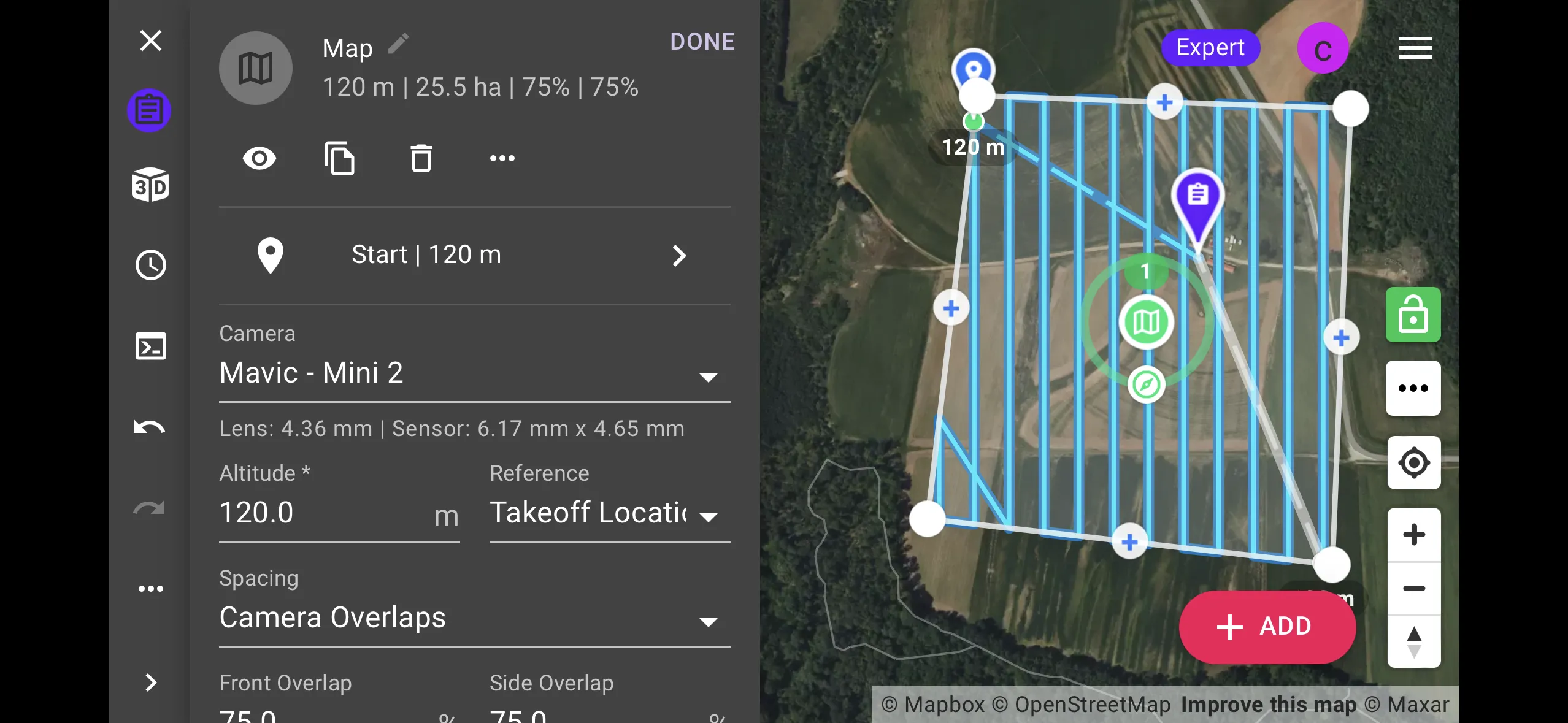
Flight Patterns
Normal

Crosshatch Pattern 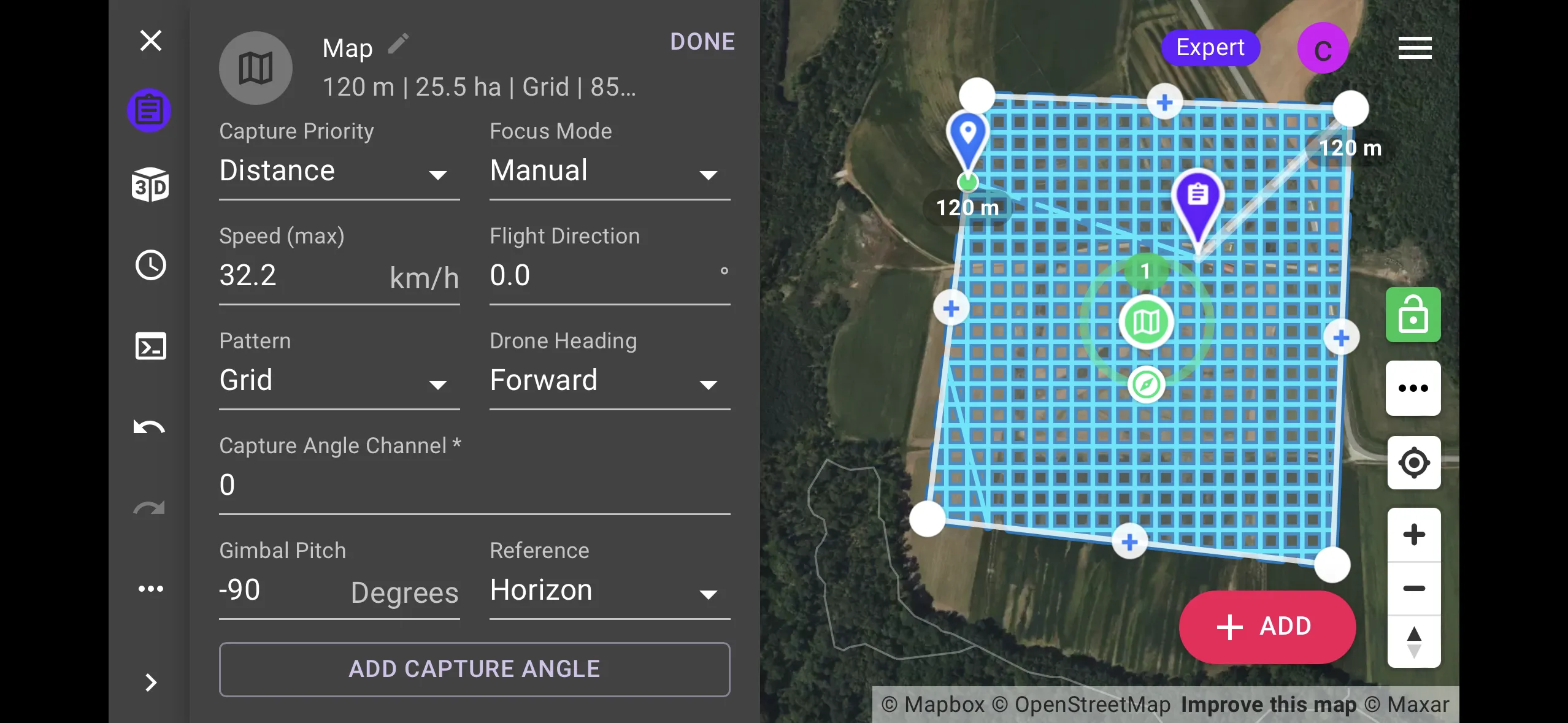
- More detail
- Longer flight times
Overlap
- Front and Side
Min Overlap 60% forward 40% Laterial (Side)
Homogeneous Terrian > Overlap
Caution
How will overlap impact your flight path?
Drone Speed
~30 km/hr
- Lighting
- Camera Shutter
- Altitude
- Motion Blur
Lighting
- Overcast
- Noon
- Avoid Shadows
- Partly Cloudly
Summary
- Phases of UAS flight planning
- Safety procedures and checklists for safe flight operations
- How does our study site look like
- How to plan a flight